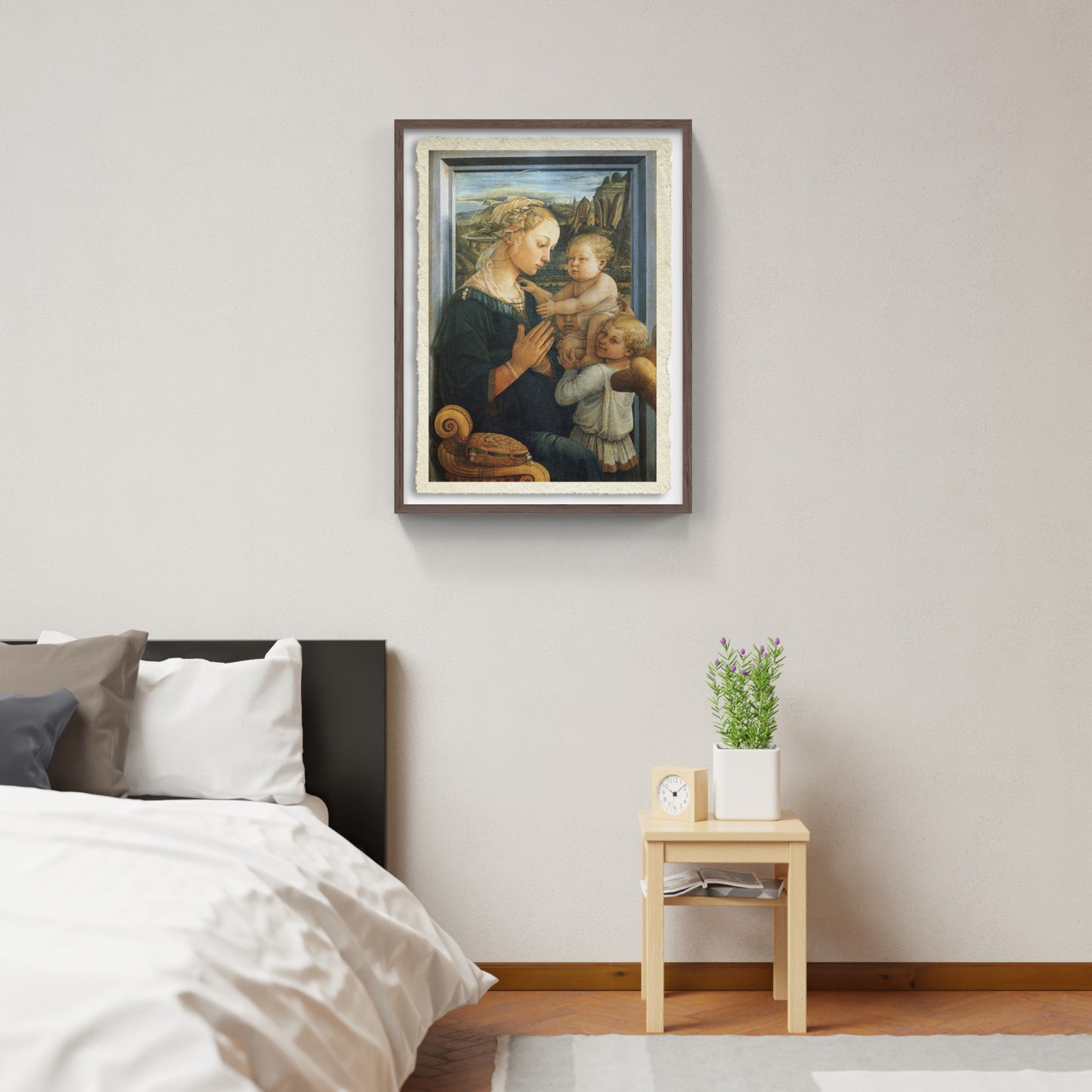Madonna and Child with angels, called La Lippina, by Filippo Lippi
Madonna and Child with angels, called La Lippina, by Filippo Lippi
Couldn't load pickup availability
SKU:TS9JC24YDPV6E
WHY BUY
- Magnificent and real colors
- It makes any room elegant
- Perfect for a prestigious gift
CHARACTERISTICS
Print on handmade paper from Amalfi
Sheet size: 30 x 42 cm
Material: work printed on very fine handmade Amalfi paper with fringed edges
Print on handmade Amalfi paper with frame
Sheet size: 30 x 42 cm
With frame: 32 x 44 cm
Material: work printed on very fine handmade Amalfi paper with fringed edges, handmade beech wood frame
Print on pictorial canvas
Measurement: 80 x 60 cm
Material: work printed on very fine grain pictorial canvas
Frame: Light brown beech wood and handmade wood pulp
DO YOU WANT INFORMATION ON THE PRODUCT? WHATSAPP CHAT WITH A CONSULTANT
The work
The Madonna and Child , also known as La Lippina , is a work by Filippo Lippi created around 1465. The painting, famous for its delicacy and intimacy, depicts the Madonna window holding the Child Jesus in her arms in a domestic setting overlooking the surrounding landscape. The Madonna is seated and wears a blue cloak and a white veil, while the Child is naked and affectionately wrapped in his mother's arms.
The backdrop features an idyllic landscape visible through a window, enriching the scene with a sense of depth and serenity. Lippi demonstrates his mastery in the use of color and light, creating an effect of softness and naturalness in the figures.
A characteristic element of the work is the presence of two angels holding the Child. The angels, with their sweet and joyful expressions, accentuate the theme of sacredness and maternal love. The composition is balanced and harmonious, with particular attention to details, such as the embroidery on the Madonna's robes and the transparencies of her veil.
Botticelli, a pupil of Lippi, was deeply inspired by this work, adopting the expressive sweetness and delicacy of the figures in his own representations.
Currently, La Lippina is preserved in the Uffizi in Florence, where it continues to be admired for its beauty and intense expression of maternal affection, representing one of the masterpieces of the Italian Renaissance.
How reproductions are made





Scopri i pregiati materiali di Trizio Editore
Carta di Amalfi fatta a mano, cornice in legno di faggio e vetro museale. Guarda i particolari dei prodotti che renderanno la tua casa più elegante e preziosa.



